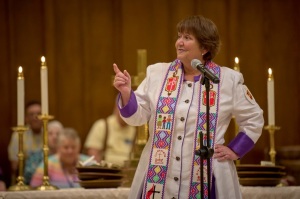Multi-Site Churches Spreading in Post-Christian Europe
Amid decreasing church attendance in Western Europe, multi-site churches have still managed to take root and spread, one group reports.
Leadership Network released a brief report providing snapshots of the various kinds of multi-site churches growing in Europe.
"While some people have questioned whether the multi-site model works in the more post-Christendom context of Europe, there are European churches, who organize themselves as multi-site churches," states the report by Joanne Appleton of the European Church Planting Network – a project of Dallas-based Leadership Network.
In the United States – which some say has also entered a post-Christian era – multi-site churches have already spread to nearly every major city and state. Almost one in ten Protestant worshippers attend a multi-site church in the United States or Canada, according to A Multi-Site Church Road Trip.
The recent report notes a growing interest across Europe in multi-site church. Providing an initial picture of the movement overseas, the report follows three western European churches that have gone multi-site and explores their rationale and unique practices.
Among the churches is the International Christian Fellowship Movement, which began in Zurich, Switzerland in 1996. The non-denominational church had 40 church plants across nine countries. One of the churches decided to take the multi-site route in 2007 when it launched a location in Rapperswill near Zurich.
"We drew a circle around a 30 minute travel distance from our central meeting place, and asked what would happen if we drew another 30 minute distance around the outside of that," ND Strupler, coach for ICF Team and
Start-Up's, says in the report. "Zurich is the biggest city in Switzerland, with not even 400,000 people, but if we plant seven campuses each 30 minutes travel distance from the centre we could reach a population of around 1.5 million people."
ICF Zurich originally had live preaching and worship at all its sites but one of the campuses now has video feed of the preaching alongside live worship. Strupler says people were skeptical about the move to video at first but the change developed into a success.
The church plans expand to seven locations out of Zurich.
Holy Trinity Brompton is a London-based church that has also adopted the multi-site strategy. The church draws about 4,500 people weekly.
Miles Toulmin, executive pastor of HTB, went multi-site with a vision for the "re-evangelization of the UK and the transformation of society," according to the report.
"We worked out how big we would need to be to resource the vision, and decided that going multi-site would be the best way to help us expand the base for church planting," Toulmin stated.
Toumlin explained that they were holding five services in one building and four of them were completely full.
With "nowhere to grow," the HTB pastor said they "wanted to do something that would grow the base, but keep alignment with our core DNA – which was more likely in a multi-site situation."
HTB still currently conducts four services at each of their two sites, but that is partly due to the lack of affordable and available buildings in central London, he said.
HTB also utilizes video teaching but has campus pastors and live worship at each site. And while the Brompton location offers a more traditional church experience, the second site at St. Paul's Onslow Square offers a more informal style with everyone sitting on bean bags and sipping coffee.
AAVM, meanwhile, is engaged in the "mid-size communities" movement with small clusters of people connected to each of their church sites (which have a maximum of around 150 people). With each community and site developing, Keld Dahlmann, senior pastor of AAVM, believes central teaching services may eventually disappear and that the church could become a network of church plants.
The key to AAVM's multi-site strategy, Dahlmann said, is making each location "lightweight, volunteer-led and not center driven."
The multi-site revolution in Europe is likely to have more "angles" and "facets" as it spreads, the report states, but the primary goal of the churches is clear: "to multiply their effectiveness in reaching the women, men and children of Europe for Christ."




























